Castles are domineering aspects of the British landscape, standing as constant reminders of this country’s long and turbulent history. Whether ruined or relatively intact, they ooze atmosphere and grandeur, conjuring images of the powerful and influential families that lived in them.
Capturing a great photograph of a British castle can really help to bring our heritage and history to life, and a few simple tweaks will ensure you come home with stunning images.
1. Place the castle in context
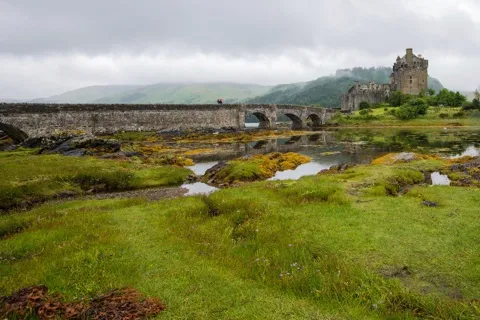
Setting a castle in its grounds is a great way of showing off the drama of their construction, life and the time in which they stood. It’s a quick and effective way of establishing the building’s connection with the land and the wild nature of its past. A wide-angle lens will help you fill the frame with the surrounding landscape and keep everything in focus.
2. The small details matter
Castles are adorned with interesting architectural features, from gargoyles to archways and windows and the flourishes around them.
It's easy to get caught up in the size of these buildings and how impressive they are, but small details and intricate decoration can tell a story of its own, reminding us that these were people’s homes, not just denfensive or military structures. Try swapping to a macro or telephoto lens once you're too close to the castle to fit it all in your frame and go hunting for interesting close-ups instead.
3. Capture the atmosphere
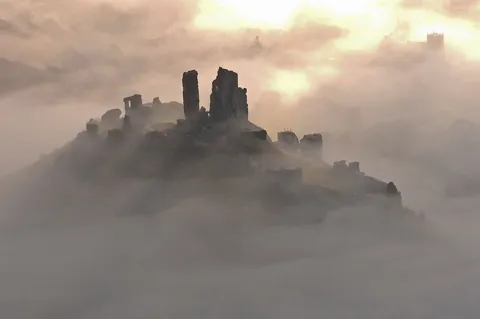
Photo: David Bunting under the Creative Commons license.
There’s nothing more mysterious and stirring than a castle surrounded by mist, or moodily lit by sun rise or sunset. Every pro landscape photographer knows that dawn and dusk are the 'magic' hours, when the light is best for beautiful images. Arriving early in the morning also usually ensures that you're alone, so you won't have other people ending up in your shot.
4. Use a wide-angle lens
It might seem a little obvious, but castle are very big buildings. Whilst getting up close to them can highlight interesting features, taking a step back and getting the whole thing in frame can help underline the sheer scale of the building and what logistical and financial effort went in to constructing it. A wide-angle or even a fisheye lens will let you get reasonably close and still include most of the structure in the viewfinder.
5. Make the most of symmetry
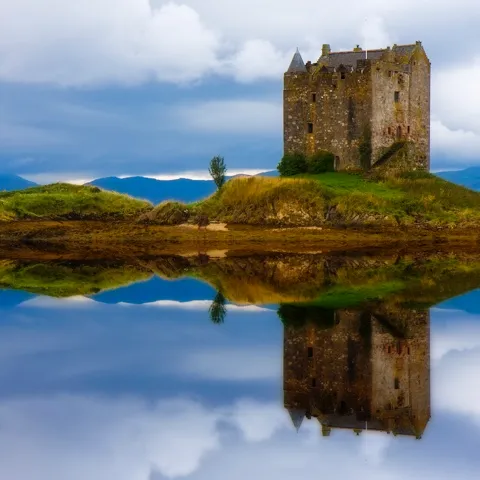
Photo: Andrea Mucelli under the Creative Commons license.
Castles, and particularly their keeps, are deliberately built with beautiful symmetry. Not only is this aesthetically pleasing but it was a crucial technique in developing a strong and sturdy building that would be resistant to enemy forces.
This lends itself to similarly aesthetically pleasing photographs, too! Try balancing the castle with its reflection in its moat for a surreal double-up effect.
6. Vary the height of your camera

Photo: Louis Vest under the Creative Commons license.
Images taken at eye level are all well and good, but experimenting with angles and height can add an extra dimension to your images. A well known cinematic and photograph technique is to shoot a subject from a low level, looking up, to add a sense of domination and intimidation.
This can work really well for castles. Lie down on the ground and shoot looking up at the battlements and flagpoles to help the building loom above the viewer, just like here at Chepstow Castle.
7. Use visual anchors to draw the viewer in
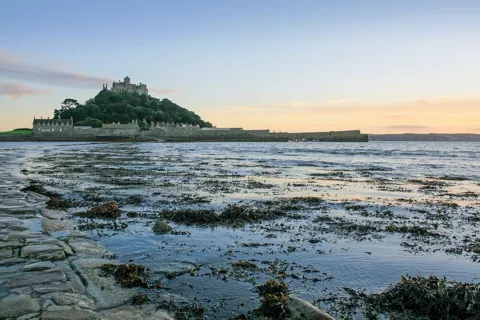
St Michael’s Mount in Cornwall is a perfect example of this kind of technique as it comes complete with its own stone causeway at low tide.
Placing items like this in the foreground of your image help to lead the viewers’ attention from the bottom of the photograph to the main point of interest.
Paths, streams, lines of trees and drawbridges can all help create that desire to enter the castle and make the viewer wonder what's inside.
8. Frame your image
Using archways, doorframes and windows to surround another detail of the building can be an excellent way of drawing attention and adding depth to the image.
Perhaps there’s a doorway that would make a nice frame for a font or other item of interest? Edging the photo with a pre-existing border can make your subject seem like a secret waiting to be discovered. Make sure that your focus point is the centerpiece of the image to draw the eye straight in.
9. Photograph events
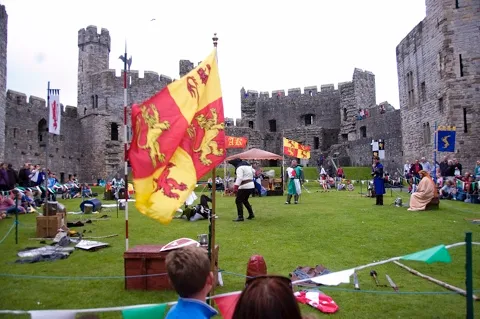
Photo: Stuart Bramley under the Creative Commons license.
They might not be everyone’s cup of tea, but many well-preserved castles host reenactments and themed days, animating the history of the building and bringing it back to life.
Jousting, falconry displays and dramatised battles can provide some good, more light-hearted photo opportunities and add colour to otherwise bleak castles. It can take a lot of patience, though, if there are crowds of visitors wandering in and out of shot.
10. Shoot in monochrome
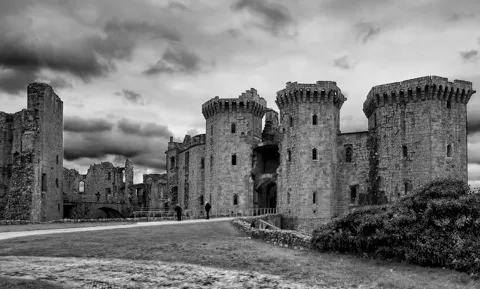
Photo: Jordin57 under the Creative Commons license.
Shooting in black and white really helps to boost the mood and atmosphere of an image. Many cameras have a built-in monochrome mode, which will pick out moody highlights in clouds and stonework and create a ghostly final feel.
